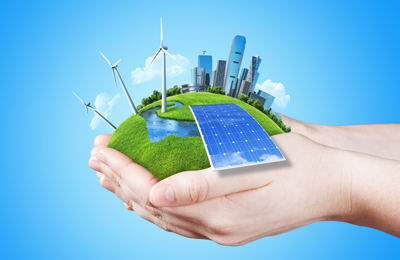India in 10 years: Towards smart and sustainable infrastructure
The responsibility of infrastructure creation rests on the government

Before the dawn of the new century, crippled infrastructure was commonplace. Per capita electricity consumption was a meagre 380 units per year, with nearly half the population off grid. Production resources were state-controlled, and so was production. Installed capacity was 90 gigawatts (GW). As of 2016, the installed capacity had crossed 310 GW, with per capita consumption upwards of 1,000 units and near 100% electrification. The story across other sectors, like highways, airports and ports, is similar. This monumental change has been the defining characteristic of this period.
The responsibility of infrastructure creation rests on the government. Over the period, the government actively encouraged public-private partnerships (PPPs)—tapping into the capital pool and efficiency of the private sector while freeing itself to pursue the social agenda. The Electricity Act, 2003 was a watershed moment for the power sector. Similar policies for other sectors followed, enabling India Inc. to participate in the process of building infrastructure.
India Inc. did its job well. Nearly one-third of the $450 billion (around Rs30 trillion) investment in the 11th Plan period came from the private sector, while in the 12th Plan that is about to end, half of the more than $1 trillion investment is expected from the private sector. By taking over the government’s obligations to the tune of $500 billion, India Inc. has enabled the state to use such resources towards poverty alleviation programmes. This is apart from the 50 million jobs that the sector has created.
At GVK, we have played our part in the journey—the first independent power plant (IPP) in India was commissioned by GVK in 1996, the first PPP road under the National Highways Authority of India (NHAI) was built by us—I played a role in this. Two of the largest airports in the country, Mumbai and Bengaluru, were transformed into best-in-class airports in the world. The successful commissioning of the Alaknanda hydropower plant was a moment of personal gratification for me, for the project had seen every possible obstacle—from floods and geological surprises to multiple litigation.
As a sportsman myself, the creation of sports infrastructure will be a priority going forward. Telecom infrastructure is another area I personally will be exploring.
The challenges that the sector faces remain. The laws surrounding land acquisition are the biggest. Land records remain archaic, even establishment of ownership takes years of litigation. The process consumes considerable time and energy on the part of developers, and often leads to delays and overruns. I believe the government should give land issues topmost priority. Other challenges, including clearance delays, have been addressed adequately by the government, and the time taken to obtain clearances has come down sharply in recent years. Financing and refinancing norms should be addressed on priority too to enable India Inc. to take up newer projects.
The next decade will represent unprecedented opportunities. Having made significant progress in the creation of basic physical infrastructure, the onus will be on us to take it to the next level, towards smart and sustainable infrastructure.
Sustainability is expected to be key for new capacity addition in the power sector. Buoyed by the National Solar Mission, we expect to see solar-installed capacity touch 100 GW. A similar push towards wind and mini-hydel plants is expected to receive an impetus.
In the power sector, we have reached a point where the deficit, both peak and energy, is within manageable limits. The focus now has to shift to demand-side management—starting with the headline parameters of AT&C (aggregate technical and commercial) loss management, to monitoring household and other consumption. I sense a lot of opportunities in the application of smart grids that can integrate the entire spectrum—generation, transmission and distribution—to achieve optimum results. The private sector is expected to take the lead in setting up mini-smart grids in India. The 100 Smart Cities Mission is going to change municipal administration fundamentally—be it for traffic, water or waste management.
I foresee cutting-edge technology like the Internet of Things (IoT) finding application in solving complex real-life problems. The integration of physical infrastructure and virtual infrastructure presents interesting opportunities for the private sector.
With prospects looking very bright and promising, we are happy to have been a part of this journey so far, and are gearing up to align ourselves for the next level of challenges
Krishna Ram Bhupal is the managing director of GVK Jaipur Expressway Pvt. Ltd and executive director at GVK Power (Goindwal Sahib) Ltd.


